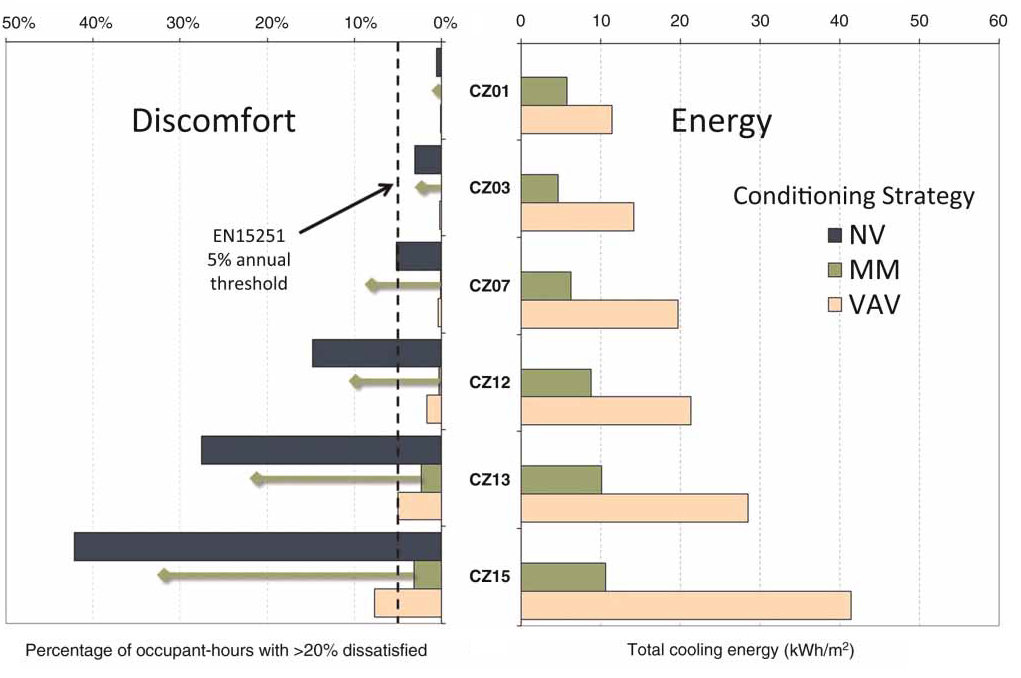Evaluation of California climates for mixed-mode strategies with radiant cooling
Status: Completed
Funding Sources: California Energy Commission
Project Objective
Investigate which of California’s 16 climate zones are likely to be most appropriate for mixed-mode strategies involving radiant cooling. Estimate the thermal comfort performance and magnitude of potential energy savings from using mixed-mode strategies in these climates.
Significance to Industry
The results of this research give design professionals an idea of whether or not a mixed-mode strategy that incorporates radiant cooling is likely to be successful in a particular California climate. It also develops a method that can be applied to other climates.
Research Approach
Mixed-mode cooling strategies were simulated using a model of an existing building that has a radiant floor slab and cooling tower as well as operable windows. Beyond the physical construction of the building, the model also included algorithms for the system’s control strategies and occupants’ window-opening behavior. These were chosen through a combination of case studies and literature review.
A metric of thermal comfort, in this case exceedance, is also required for assessing the suitability of the mixed-mode setup for each climate zone. Exceedance is the number or percentage of occupant hours when the thermal environment is outside the comfort zone (defined by conditions in which at least 80% of people are predicted to be satisfied). It can also be calculated in more complicated ways, for example by weighting how far out of the comfort zone the space is during each hour. Exceedance values were found to be sensitive to calculation method and comfort model used. This report uses an unweighted exceedance calculation and both Fanger’s PMV model and the adaptive comfort model.
The performance of the test building was simulated using several different configurations including pure natural ventilation, three mixed-mode operating strategies, and pure mechanical cooling. Based on the simulated exceedance values, mixed-mode operation with radiant cooling was found to be most effective in the coastal climates, especially if comfort was assessed with the adaptive model or an average of the adaptive and PMV models. If all the commercial buildings in coastal climates used operable windows along with a radiant system and a cooling tower that is active at night, we could reduce ventilation and cooling energy by about 75% in the coastal climate zones and by about 30% across the state.
Publications and Reports
Borgeson, S., G. Brager, B. Coffey, and P. Haves, 2009. Mixed Mode Simulations for Climate Feasibility. CBE Executive Summary, October.
Borgeson, S. 2010. Assessment of Energy Use and Comfort in Buildings Utilizing Mixed-Mode Controls with Radiant Cooling. MS Thesis.
Borgeson, S. and Brager, G., 2011. Comfort standards and variations in exceedance for mixed-mode buildings. Building Research and Information, 39(2): 118-132.

